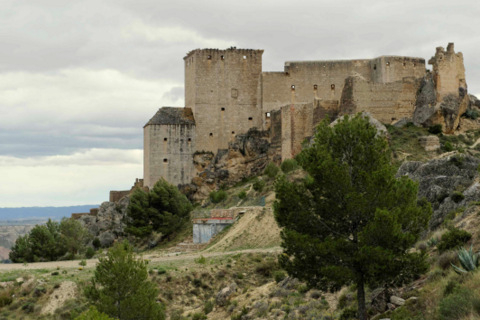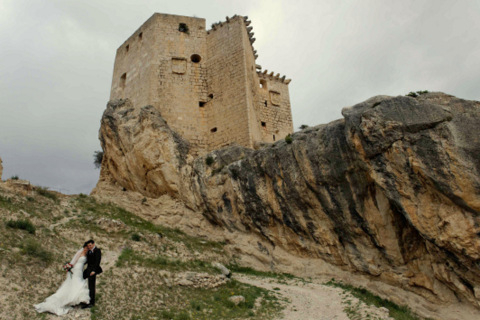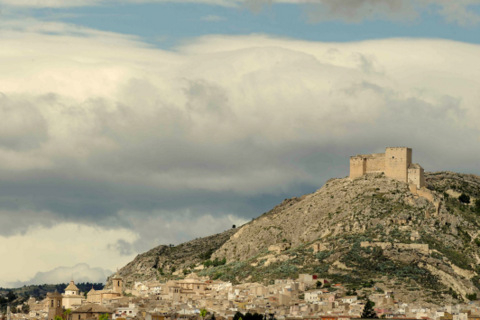

Guidelines for submitting articles to San Javier Today
Hello, and thank you for choosing sanjavier.today to publicise your organisation’s info or event.
San Javier Today is a website set up by Murcia Today specifically for residents of the urbanisation in Southwest Murcia, providing news and information on what’s happening in the local area, which is the largest English-speaking expat area in the Region of Murcia.
When submitting text to be included on San Javier Today, please abide by the following guidelines so we can upload your article as swiftly as possible:
Send an email to editor@spaintodayonline.com or contact@murciatoday.com
Attach the information in a Word Document or Google Doc
Include all relevant points, including:
Who is the organisation running the event?
Where is it happening?
When?
How much does it cost?
Is it necessary to book beforehand, or can people just show up on the day?
…but try not to exceed 300 words
Also attach a photo to illustrate your article, no more than 100kb

Mula castle, el Castillo de los Vélez
Mula, Fortaleza de la familia Fajardo
This castle is the foremost landmark of the city of Mula, perched on top of the hill which protects Mula from its neighbours to the north, dominating the skyline with the town at its feet.
It was built as a result of the quarrels between the Fajardo family (who became the Marqueses de Los Vélez) and many of Mula’s more powerful citizens as a statement of the power and wealth of the former during the 16th century.
The Fajardos were in the ascent during the 14th century with powerful friends in the Order of Santiago, which owned vast tracts of the Region of Murcia and the Castile, one of the two main royal houses which dominated Spain. At this point in history Spain had not yet been united into one and these two powers were locked in a constant state of conflict and political intrigue for the succession of the respective kingdoms and domination of territories.
 Murcia came under the control of Castile, and was governed during much of the early 14th century by the house of Manuel, the Marqueses de Villena, but their power waned during the latter part of the 14th century and the Fajardos became the most powerful family in the area, taking the governership of Murcia, a position they held for three generations.
Murcia came under the control of Castile, and was governed during much of the early 14th century by the house of Manuel, the Marqueses de Villena, but their power waned during the latter part of the 14th century and the Fajardos became the most powerful family in the area, taking the governership of Murcia, a position they held for three generations.
In 1373 Alfonso Yáñez Fajardo I bought the land and water rights in La Puebla de Mula from the council of Mula. He was not in control of the local jurisdiction at the time, but this purchase signalled his first steps into taking control of the Mula area.
His son, Alfonso Yáñez Fajardo II, received control of Mula on 12th September 1430 from King Juan II in recognition of his withstanding an attempt by Prince Enrique de Aragón to take control of the title of Marquis of Villena (part of the struggle between Castile and Aragón.)
This effectively gave the Fajardos ownership of Mula but caused a great deal of upset amongst the local leading families, who never really accepted this royal gift being made, and they continually levelled accusations of unfair treatment against the Marquis de los Vélez and his successors.
 These accusations are a constant feature in the history of the Marquises de los Vélez, as can be seen in the message written by the Governor General to the Mayor of Mula in 1653: “The complaints received by the estate are numerous, particularly from the villa of Mula” The complaints even disputed the judicial status of the villa, with the local families believing the town to have come under royal jurisdiction since the time of Alfonso X “El Sabio” in the early 13th century rather than that of the Marquis. This case was heard in the Chancery of Granada, where the rights of the Fajardos were upheld although with reduced influence on the town council.
These accusations are a constant feature in the history of the Marquises de los Vélez, as can be seen in the message written by the Governor General to the Mayor of Mula in 1653: “The complaints received by the estate are numerous, particularly from the villa of Mula” The complaints even disputed the judicial status of the villa, with the local families believing the town to have come under royal jurisdiction since the time of Alfonso X “El Sabio” in the early 13th century rather than that of the Marquis. This case was heard in the Chancery of Granada, where the rights of the Fajardos were upheld although with reduced influence on the town council.
The official record books of the house of Vélez make extensive mention of this case and the many others presented by Mula. In one such case a request was made for limits to be set on the powers and jurisdiction of the Mayor, in another they requested that it should be the council who appointed the sheriff and the town scrivener, in another that the council should appoint town clerks, and so on.
The Murcian Governor General was forced to admit uneasily that the people of Mula were tough nuts to crack, adding that this attitude "seemed to be passed on from one generation to the next by their mothers’ milk."
At this time Mula was the largest town under the control of the Marqués de los Vélez, with 1,000 inhabitants, followed by Vélez Rubio with 500.
The fortress itself lies off the old road which linked Mula and Caravaca, and an inscription on the façade which says, "Lugivicus Fajardo me fecit 1524" indicates this as being the date of completion.
 There is another inscription at the entrance to the Torre del Homenaje (the keep), which states that the castle was built on Roman foundations. This is presented as a means of justifying the Fajardos building this fortification, in their minds "rebuilding" an existing historical structure.
There is another inscription at the entrance to the Torre del Homenaje (the keep), which states that the castle was built on Roman foundations. This is presented as a means of justifying the Fajardos building this fortification, in their minds "rebuilding" an existing historical structure.
In truth, there is no documentary or archaeological proof that any such Roman structure actually existed, although there was a Moorish watchtower and fortification on the same site, some walls of which are still visible.
This "camouflaging" of their actions took place in an era not long after Spain had been united for the first time by the marriage of Ferdinand of Aragon and Isabella of Castile in 1492, known as the Catholic Monarchs. Their combined forces had expelled the Moors from their last stronghold in Spain, Granada, bringing an era of peace, in which castles were not considered a necessity for noble families due to the relative stability of the new nation. Indeed, the new Monarchs were sensitive of the need to curb the power of noble families and "discouraged" them from building fortifications which could weaken their own power base. However, it is a testament to the influence and power of the Fajardos with the royal family that they got away with "rebuilding" this fortification unchallenged.
The architecture of the existing structure is simple and stark, consisting of three large blocks: the “torre del homenaje” (the keep), the “torreón del aljibe” (the well tower) and the large area known as the “plaza baja”. The main gate of the castle is reached by a Moorish walled path which was reinforced in the early 16th century, and this leads up to the entrance, over which there is a machicolation (an opening in the floor through which objects could be dropped on intruders) which served as a defensive measure. Once inside, the first thing a visitor sees is the small patio which stood at the heart of the structure.
 Linking the two main tower constructions is a wooden bridge, which could probably be raised originally, across to the keep. The purpose of the keep was to provide sleeping quarters for the garrison. It has three storeys and a terrace, which was completely surrounded by battlements. On each floor there is a fireplace, and on the ground floor at the north-east corner is a semi-circular hole in the wall. This was used to channel out the water which reached the entrance patio: the water passed through here and then on to the well.
Linking the two main tower constructions is a wooden bridge, which could probably be raised originally, across to the keep. The purpose of the keep was to provide sleeping quarters for the garrison. It has three storeys and a terrace, which was completely surrounded by battlements. On each floor there is a fireplace, and on the ground floor at the north-east corner is a semi-circular hole in the wall. This was used to channel out the water which reached the entrance patio: the water passed through here and then on to the well.
The well is located in the most heavily defended area of the castle, the eastern tower. It is around twelve metres deep, and seven metres of this depth was dug into the rock of the mountain itself. The total volume of the well was approximately 125 cubic metres.
The only ornamentation visible is the coat of arms of Pedro Fajardo, together with those of his second and third wives, a stern reminder to the residents of Mula as to who owned the town.
The castle is a popular spot for visitors, although lacking care and attention today due to the fact that it is still privately owned by descendants of the original family, not the council, and is a popular spot for visitors and even wedding photographers.
Access
The castle can be reached through the back of the old town, but it is very difficult to describe the route, and a little un-nerving for drivers uncomfortable with the narrow streets of these old towns. The easier route by far leads up from behind the outcrop on which the castle sits.

